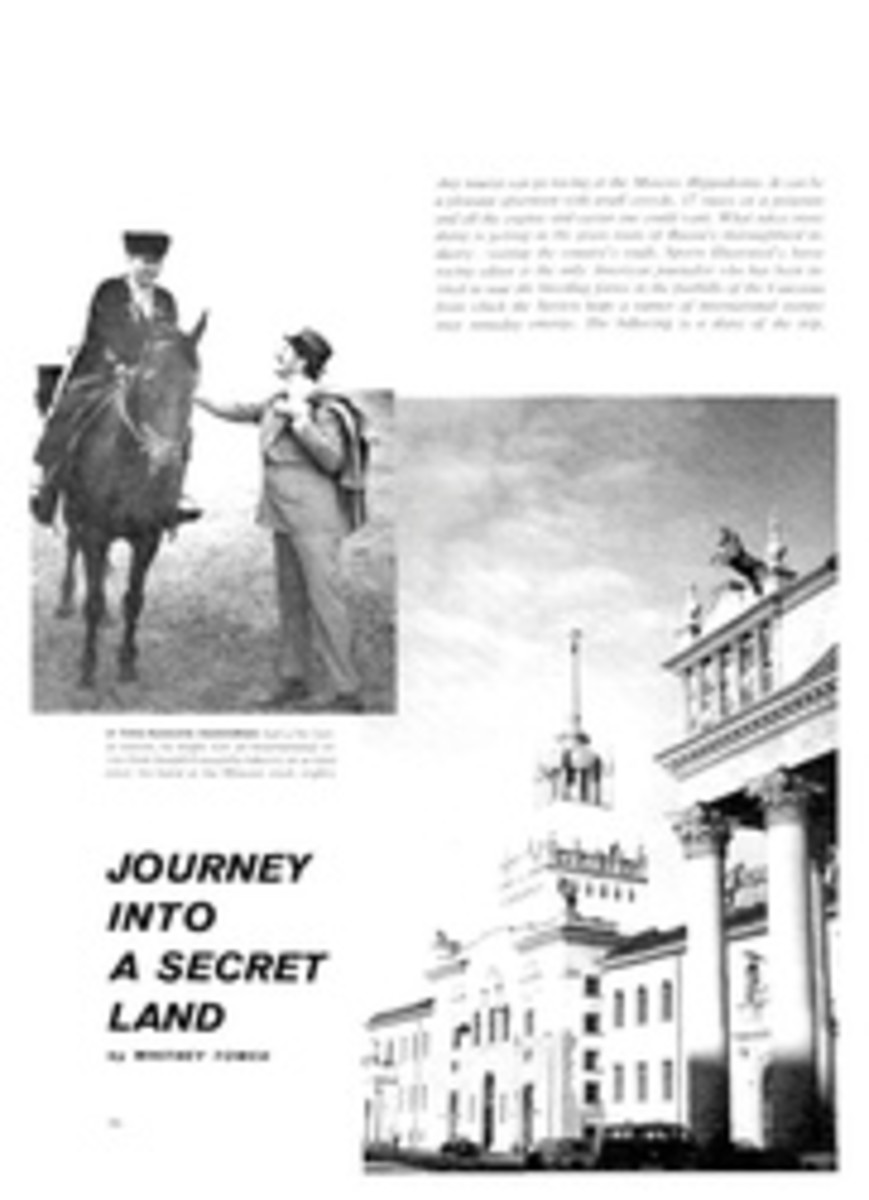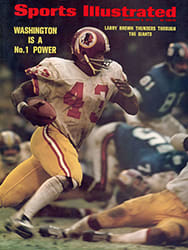
Here comes a ton of tennis books, some of them to be welcomed with open arms
The tennis centennial and the tennis boom are upon us, and since any centennial or boom is inevitably accompanied by a litter of books, we can expect to be inundated with court literature in the months ahead. Let us hope the first wave is a sample of what to expect because I have examined three big expensive tennis books and, to my surprise, must commend every one of them.
If you can stand this, the cheapest of the three ($11.95 through 1972, then $13.95, Harper & Row) is the Official Encyclopedia of Tennis, which has 470 pages, 250 illustrations and was edited by the United States Lawn Tennis Association. Is it damning the book with faint praise to say that it is surely the best thing the USLTA has ever done?
No matter, it is a masterful, thorough job, including every conceivable fact of tennis—or sphairistike, as the game was originally known. The volume is a perfect introduction for the beginner or the compleat reference for the compleat fan. (One sour note: I have home movies of the 1967 Wimbledon championships and know damn well who Billie Jean King beat in the finals that year, and it was not Maria Bueno, who is listed as the runner-up in the Official Encyclopedia; it was Ann Haydon-Jones. I hope this is a lonely error, but it is important because Official Encyclopedias ought not to be official and are not encyclopedic unless they are also very, very accurate.)
The book leaves nothing to the imagination. For example, photographs show how players should spin a racket to determine serve. There are rules, rankings, records, biographies, etiquette, technique. There is even some sort of Dear Abby advice; i.e., Tips for Parents: "Display your child's trophies [but] if someone comments on them, thank them but do not then proceed to identify every cup and medal."
As a group—and with the possible exception of distance runners—tennis players write more often and with more determination than any other athletes in the world, and would have you believe they are more literate as well. The Fireside Book of Tennis (Simon & Schuster, $14.95) does include the selections of many players but mercifully features larger doses from other sources. (It contains, for the record, several of my own pieces. Lest one assume that this would color my thinking about the whole book, be apprized that my name was misspelled in every instance.)
Readers probably do well to feel instantly suspicious of all things that call themselves fireside collections—as well as of memory lanes, together-agains and all titles that begin My Favorite...or 1,001.... But this fireside collection is charming, an unpretentious crazyquilt that gives skimming a good name. Homely little first-person accounts rest side by side with slick magazine pieces and spare newspaper deadline accounts. We have, for example, the poignant recollection of Tony Wilding saying good-by to Norman Brookes, his Davis Cup teammate, at the World War I front and riding off to his death on a motorbike—followed immediately by the dry, technical account of the 1919 championships.
The pieces were collected by Peter Schwed, an editor, and Allison Danzig, the retired New York Times writer who, luckily, has been prevailed upon to include many of his own stories. His account of the Tilden-Cochet match of 1926 is the second most thrilling piece of business in the whole anthology, the first being Al Laney's article about the famous Suzanne Lenglen-Helen Wills meeting at Cannes that same year.
This collection shows, in fact, that people wrote about the game of tennis much better a generation ago, though writers did not catch the personalities so well then; the emphases are apparently quite apart. Only Tilden among the oldtimers comes across with much depth of feeling (though no writers dare even hint at his homosexuality); wonderful characters like Mile. Lenglen and Maurice McLoughlin remain only clichés, the Maid Marvel and the Flame-Thatched California Comet. Oh, well, maybe that is for the best.
A few years ago John McPhee wrote the excellent tennis book Levels of the Game, and he returns now with WIMBLEDON: A Celebration (Viking, $14.95)—but it is a different effort altogether. McPhee is only out to sketch Wibbas dune (home of the Saxon) to patch up an impression of the world's championship. Alfred Eisenstaedt's photographs are included to complete the image and to get the book out of the library and onto the coffee table.
Obviously, McPhee is making no effort to be definitive or even ordered, but still I think he made a mistake in not paying more attention to the past—the tradition, the heritage and what have you. He has such a keen eye for the place and the people and writes so well, however, that he brings off what he tries. Curiously, and most uncharacteristically, McPhee does get strangely precious at times—Donald Dell and Jack Kramer, I am afraid, "sit up until three a.m. every night picking lint off the shoulders of chaos"—but many of his insights and vignettes are simply, precisely right.
Tennis is a fetching game that usually gets atrocious coverage in the U.S. These books can, each in its way, help correct that image.

